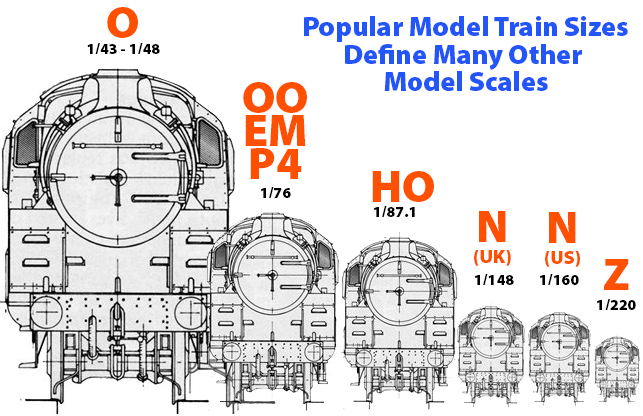A Guide to Model Railway Scales
What scale is my model train? What is 00 Gauge? How big is N Gauge?
With such a wide variety of scales and gauges available to railway modellers it can become difficult to decide which product is right for you. This guide explains the differences between some of the most commonly used model rail scales and gauges.
Firstly it is important to understand the difference between scale and gauge. Scale refers to the physical size of the model in relation to the real world, for example a 1:76 scale model is 1/76th the size of its real world counterpart. As a rough guide, the larger the scale number the smaller the model.
Gauge refers to the distance between the rails - different gauge models and track have a standard measurement for that gauge between the wheels and rails. However, this is where the difference between scale and gauge becomes important - different scale models can run on the same track if the gauge is the same.
00 Gauge
scale 1:76 gauge 16.5mm
The most popular model rail scale in the UK. As 00 and H0 have the same gauge track, 00 models can run on a H0 layout and vice-versa.
Brands: Hornby
H0 Gauge
scale 1:87 gauge 16.5mm
H0 Gauge is the most widely used gauge outside the UK. As H0 and 00 have the same gauge track, H0 models can run on a 00 layout and vice-versa.
Brands: Electrotren, Lima, Jouef, Rivarossi
TT Gauge
scale 1:120 gauge 12 mm
TT, or Table Top is approximately half way in size between H0 and N, popular in Eastern Europe and Russia.
Brands: Arnold TT
N Gauge
scale 1:160 (Europe/US) gauge 9mm
The most popular gauge for small-scale rail modelling, N Gauge differs slightly depending on the region of manufacture (UK brands are generally 1:148). However, as with H0 and 00, both have the same gauge.
Brands: Arnold N
